Heads Held High – Kebe Kebe Puppets
PRIMITIVE - Thursday, May 29, 2014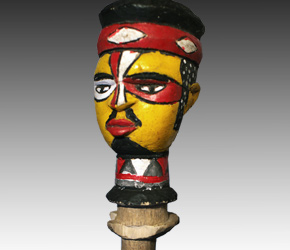 |
|
By Misaki Imagawa
First impressions can be misleading, especially when you are looking at something you have never seen before or even knew existed. The first time I saw a Kebe-kebe puppet, all I could think of was macaracas, the handheld Latin American rhythm instruments made from gourds. The masterfully carved wooden faces of the puppets painted with bright festive colors could only have been used in some sort of performance, but it wasn’t until I began to research Kebe-kebe that I discovered their real purpose – and significance.
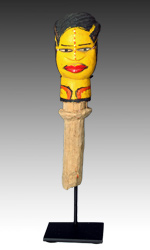 |
|
Kebe-kebe puppets originate from the Kuyu people who live along the banks of the Kuyu River in the Republic of Congo, Central Africa. They are an astonishingly small tribal group, numbering just over a thousand people. For the Kuyu, initiation is the key to retaining their ethnic identity, and both boys and girls are initiated upon coming of age. However, the initiation ceremonies for the two genders are entirely different. Girls retreat into a hut and spend much of their time in bed, their surroundings decorated with images of married life. They are left to dream and conjure up images of their future. Boys, on the other hand, are sent to the forest where they spend months – even years – in the wilderness learning to hunt, survive, and ultimately provide. The only thing the two ceremonies have in common is the Kebe-kebe dance, which occurs at the end of initiation periods.
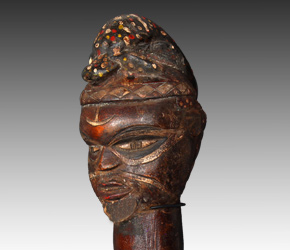 |
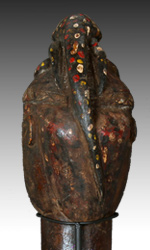 |
Kebe-kebe puppets depict various characters associated with this dance. One of the major characters is Ebongo, the serpent god of the Kuyu people, who gives birth to the primordial couple. There is also Ebotita, the mother spirit, Djoku, the father spirit, and plenty of Euya, or snake-men. Each character is represented by a dancer hidden beneath a large cloak covered with adornment. The Kebe-kebe puppet protrudes through the top of the cloak, held high above their head by hidden hands. When performing, dancers spin rapidly in circles, their cloaks swirling outward over the ground. They spin round and round for impossibly long minutes while the audience sings along, claps and dances too. Forget Whirling Dervishes, the movements executed by the Kebe-kebe dancers will leave anyone dizzy with awe.
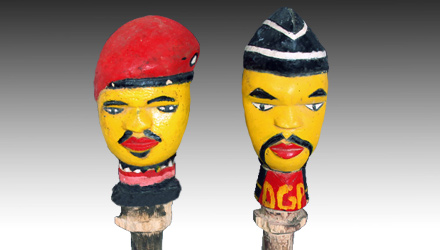
|
|
Over time, the Kebe-kebe puppets have evolved to illustrate characters in different ways. Many puppets are etched with scarification marks and female puppets, in particular, are shown with sharpened teeth – both considered features of great beauty among the Kuyu. Among the puppets in PRIMITIVEs collection, one sports a fashionably tilted hat while another appears to be a modern day policeman. Both puppets prominently feature red, a color long believed to channel magical strength. In contrast, one puppet is all black, a color associated with sorcery. While the roles of individual puppets are not always clear, the dance itself clearly radiates a sense of excitement and well being – all signs of a successful initiation and entrance into adulthood.
Kebe-kebe puppets elicited from me the same sort of delight and excitement I have felt from many other types of puppets – hand puppets, finger puppets, wire puppets, even Pinocchio. They remind me that the greatest joys can come from the simplest things, a concept that seems to cut across all geographic and ethnic boundaries. The Kebe-kebe puppets presented by PRIMITIVE have been mounted on tall, upright bases, their heads held high and proud – just as they would be, dancing above cloaked figures back in Central Africa.
Download this Article: Heads Held High.pdf